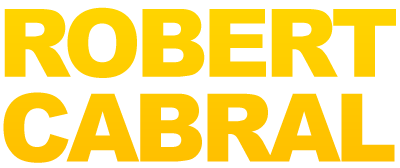
Puppies
Public Members
Public Members
Active 5 weeks ago
This group is dedicated to sharing tips for making it through the puppy stage. This can include:... View more
Public Members
Group Description
This group is dedicated to sharing tips for making it through the puppy stage. This can include: crate training, house breaking, chewing, teething, biting, integrating your puppy with other dogs and more.
Important Pages:
- Member Dashboard
- Member Lessons
- Member Wall
- Member AMA Archive
- Articles & Resources
- Community Activity Hub
- Products Shop
Mention @Alin for moderation, support or general questions.
10-Week-Old Puppy Only Responds to ‘Down’ with Luring – Is This Normal?
Tagged: puppy
-
10-Week-Old Puppy Only Responds to ‘Down’ with Luring – Is This Normal?
Posted by Deron on September 25, 2024 at 8:21 AMHey everyone! I’ve been working on teaching my 10-week-old puppy, Jax, the ‘down’ command every day for about two weeks now. Short and fun sessions. I say ‘down’ and then wait for as second or two then lure him into position, and he goes down every time with the lure. However, he has never done it without the lure first.
He just looks at me blankly until I lure him. Is this normal for his age, am I expecting too much from him at this stage? Any tips or advice would be appreciated!
Bill replied 1 year, 2 months ago 3 Members · 6 Replies -
6 Replies
-
Keep luring him down. At 10 weeks, I wouldn’t say the command is even necessary. Mine would see the shape of my hand as cues for both sit and down. Sit was almost like I cocked my wrist to wave “hi” to someone, and down was cock my wrist back like I was going to carry a tray, but then point my fingers towards the floor and move my hand down from his nose to his paws…somewhat towards him and slightly under his chest.
Not sure if any of that made sense, but, at first, there was a treat pinched between my thumb and hand. After he got the hang of that, I would do the same hand motions without a treat. When he followed the lure into position, I would reward with the other hand.
He’s 19 weeks now, and still will do sits and downs off of this hand motion. I can’t remember when i started adding verbal commands, but…it was not at 10 weeks. It was more like 12-14 weeks, but I always continued with the hand motions. Today, he understands the command, so I only have to use the hand motion if he’s being stubborn or is more focused on something else.
-
Thank you for your response! I’m currently following Robert’s puppy course, and he recommends teaching the ‘down’ command first, so that’s what I’ve been focusing on. I haven’t really been using hand gestures other than the lure itself, but it’s definitely something I’ll work on. Your explanation makes sense, and I appreciate the detail.
-
So, the hand gesture is just a hand position of where you are holding the treat, and through repetition, it becomes a hand signal so to speak.
Down was a little harder for my pup than sit, but he still got the lure relatively easy.
Also, use commands while teaching or don’t. Some have preferences either way. I personally don’t even like to speak commands until after I’ve been luring for awhile. To me, you are adding a sound that the pup has no clue what you are communicating. Just do whatever if comfortable. I can’t remember what Robert teaches on using the words early or immediately, but I seem to remember him saying don’t worry about the verbal. I know other trainers that I follow definitely say you are not accomplishing anything by adding the verbal too early.
-
-
-
You are on the right track but handler’s timing is off. When command and lure are simultaneous the dog is more readily able to make the association with the command and expected response/behavior. Keep doing sessions as you have outlined and modify your timing with the command and luring and I suspect you will see a marked improvement in no time. Your session duration and positive approach will serve you well as you build on this later.
-
I really appreciate the feedback. I was actually doing the command and lure at the same time before, but I saw some videos from trainers saying that once the puppy can be reliably lured into the down position, it’s time to add a pause before the lure. So, I’ve been trying that for the last few days. But based on your advice, I’ll go back to doing the command and lure simultaneously.
-
Hi @deronrowlands Just to add some additional support/information: Once you have the desired down in a calm environment, proof the behavior in other settings, like outside with limited distractions, then outside with distractions, etc. Once the lure is no longer needed, substitute the lure with reward. You can use a marker then reward, or, simply reward. If you are using a marker, choose a neutral word or sound. Why use a marker?? It is the fastest way to deliver a queue to the dog that “they did it.” You can then deliver a reward, ball, food, play, etc as convenient or desired. (Your marker should be a word or sound which you won’t be embarrassed to use in public.) This will help you later. If I may add, critical to your dog’s safety in all settings is the down command. With a solid, proofed down in all environments, you can stop the dog in its tracks if it is running towards danger, like a busy street, or makes some other undesirable decision. When you are ready for off leash work, you already will have the additional safety net of an unshakeable down command in place.
Tip: as you are working with the fundamentals, (sit, down, etc.) I suggest for your consideration the addition of one of the other most powerful commands, ” Free or Break”. When you are a little farther down the road, you will begin to establish “Implied” commands and you need something to release the dog from the command with. For instance, some people use down and then they follow up with “stay.” My question is – WHY? If I command down, it is implied that you stay down until released, so… I need a release command. If I use “place” that means until released from place. When I am ready to release the dog from the commanded behavior, I use “free or break.” If you start now associating the free/break with your behaviors you will thank yourself later because they become a natural part of the communication between you and your dog. Note that these are single words. The more concise and consistent your communication is, the more clearly the dog knows what you want. Hint: makes life easier down the road when you want to add hand signals so you can command the dog from afar without yelling.
These commands will be helpful when you work on increasing the duration of a behavior, like down. Associating the release with the desired behavior will cement, in advance, that the command is to be held/carried out until they hear the release. In the beginning you are just making the association so stay positive.
The down command is your safety net/emergency brake. Just like the emergency brake on the car, if you don’t take care of it – it won’t be there when you need it. The place command, which I typically associate as an indoor command though it works great outside too, is used when let’s say the delivery guy is at the door and the dog wants to be at the door too… with a developed place command you will command the dog to place and he will go to his mat/place and with the implied stay he will stay there until he has been released, he should stay there until the delivery guy leaves and you release him with break/free, etc. Developing these skills now greatly enhances the time spent with your dog and will be an excellent foundation upon which to build. You are definitely on the right track. Likely the hardest job you will have is mining through the information available on training and philosophies. Robert’s information and videos are great sources. I have attempted to give a glimpse in to why you may want to do some things now which will help you later. Regards and above all else, HAVE FUN!
-
-
Log in to reply.

